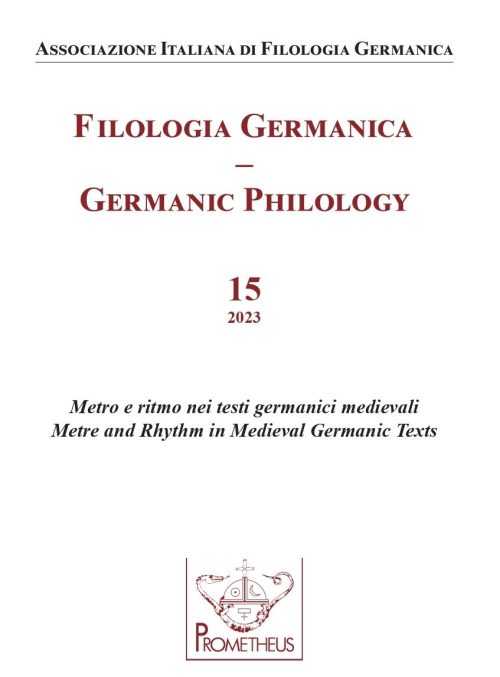Counting time in Old English meter
DOI:
https://doi.org/10.14672/fg.v15i.2428Parole chiave:
Old English, metrical grammar, GliederAbstract
Since 1885, when Eduard Sievers formalized its paradigm with his five Types, the template of Old English meter has been simple to describe but difficult to explain. Because they lie at an intermediate level of representation – too abstract to map meaningfully to prosodic constituents but too concrete to capture principles of a metrical system – the Types are convenient as a practical tool but incomplete as a theoretical
model. Indeed, their most enduring contribution, the notion of four positions or Glieder per hemistich, despite its indispensable taxonomy of variants, leaves serious questions about Old English meter unanswered. Does each position in a Type comprise a metrical beat? Do only lifts comprise a beat? How many beats underlie the half-line? What motivates parametrical schema such as alliteration and word order to intervene in and affect a metrical grammar? Such questions presently lie outside a purview that adopts Glieder exclusively as metrical units. As a descriptive exemplar, the Types hypothesize Old English meter as a static, conceptual script. This script may benefit from a complementary perspective that explores meter as an embodied process that counts beats in time. For instance, recent research in cognitive science posits a salience cue, or point of maximal contrast, precisely where Old English meter deploys a dip. This “closure positive shift” reflects active restructuring of the phrasing schemata that shape perception of a hemistich, with dips rather than lifts stipulating the number and distribution of beats and confirming a constraint not on strong but on weak units. This approach to Old English meter offers a functional explanation for the four-position architecture of the hemistich and confirms that each position in the Old English metrical line acts as a beat-bearing unit or its equivalent, bolstering a Sieversian framework by modeling not just the outputs of the metrical grammar but also that grammar’s internal logic.
Pubblicato
Fascicolo
Sezione
Licenza

Questo lavoro è fornito con la licenza Creative Commons Attribuzione - Condividi allo stesso modo 4.0.
CC-BY-SA



